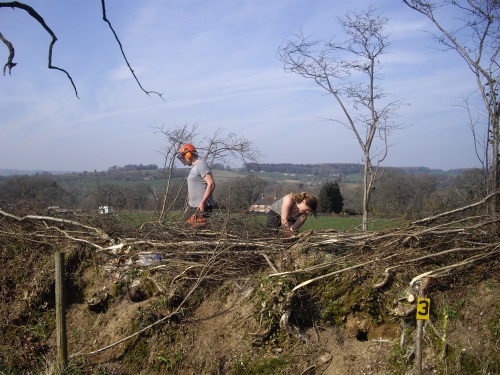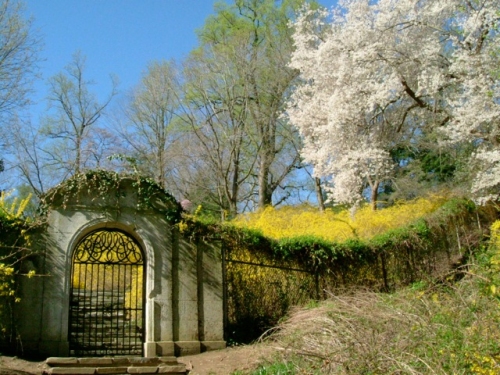Here’s another interesting Richard Jefferies quote, about how the billhook, traditionally used to cut and lay hedges, was also used as a weapon when need be.
The billhook is the national weapon of the English labourer. As the lance to the ancient knight, the rapier to the cavalier, the bowie to the backwoodsman, so the billhook to the man of the hedges. It is never far from his side; it is always somewhere within reach; the sword of the cottage. When he was a boy, while his father sat on a faggot on the lee side of the hedge eating his luncheon he used to pick up the crooked tool and slice off the smaller branches of the cut bushes to fit them for binding together. He learned to strike away so that the incurved point, if the bough was severed with unexpected ease, might not bury itself in his knee. He learned to judge the exact degree of strength to infuse into the blow, proportioning the force to the size of the stick, and whether it was soft willow, stout hazel, or hard thorn. The blade slips through the one with its own impetus; in the other it stays where the power of the arm ceases……..
This was quoted elsewhere (on livinghistory.co.uk) by Bob Burgess, who collects billhooks, and used to have a good site on them – it has disappeared and the new one is a work in progress, but worth keeping an eye on, if he updates it: http://www.billhooks.co.uk
I can understand a fascination with billhooks, they are a really satisfying tool, that haven’t changed that much since the Iron Age. And you get strange variations in local billhook styles, which probably depend on how the local blacksmiths learned to make them, and the most common use to which they were put in particular areas.
If it became necessary to fight, billhooks could be adapted, with longer handles, or spikes being added to make them more dangerous to the enemy. Then in more peaceful times they would revert to being farming tools, in a rather literal version of the “swords into ploughshares” idea.
Warning: Etymological pedantry follows…
Billhooks may well be named after hedges as well as being used to cut them. “Bill” can mean knife or axe in Old English, Dutch and German (in slightly varying spellings) – “Haga” in Old English, “Hecke” in German and “Haag” in Dutch were words for “enclosure” or “hedge”.
I’ve been told that in etymology it’s best to ignore the vowels (and to be a bit flexible about consonants). From Hecke to Hook or Haag to Hak seems at least a possible explanation of the hook in billhook and the hak in hakbijl (a Dutch version of the word). Also when the word was used to mean “enclosure” it could refer to woodland assarts, so this interpretation needn’t imply it always meant “hedge-axe” or “hedge-knife” – “enclosure-axe” is also a possible meaning.
















